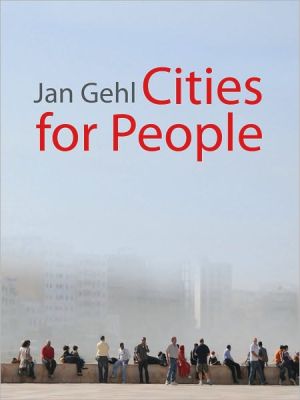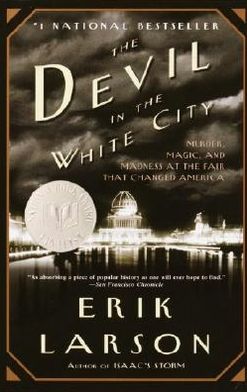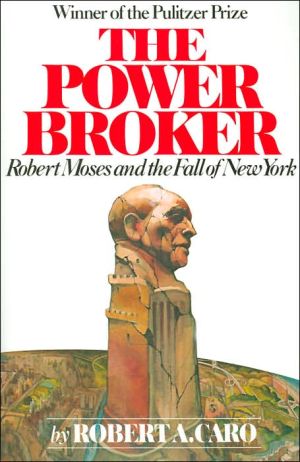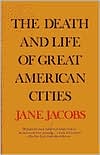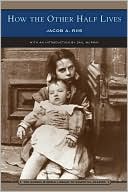Cities for People
For more than forty years Jan Gehl has helped to transform urban environments around the world based on his research into the ways people actually use—or could use—the spaces where they live and work. In this revolutionary book, Gehl presents his latest work creating (or recreating) cityscapes on a human scale. He clearly explains the methods and tools he uses to reconfigure unworkable cityscapes into the landscapes he believes they should be: cities for people.\ Taking into account changing...
Search in google:
For more than forty years Jan Gehl has helped to transform urban environments around the world based on his research into the ways people actually use—or could use—the spaces where they live and work. In this revolutionary book, Gehl presents his latest work creating (or recreating) cityscapes on a human scale. He clearly explains the methods and tools he uses to reconfigure unworkable cityscapes into the landscapes he believes they should be: cities for people. Taking into account changing demographics and changing lifestyles, Gehl explains how to develop cities that are lively, safe, sustainable, and healthy. The book is extensively illustrated with over 700 photos and drawings of examples from Gehl’s work around the globe. Publishers WeeklyIn this fascinating look inside the key architectural factors that determine a city's livability, award-winning Danish architect and author Gehl (Public Spaces, Public Life) examines the factors he deems essential to a successful city. Not surprisingly, places designed without good room for safe walking and biking lead to a sedentary life "behind steering wheel and computer screen." A "lively" city, on the other hand, "counters the trend for people to withdraw into gated communities… serving a democratic function where people encounter social diversity." It's in examining architecture's psychological effects that Gehl truly shines; public spaces without comfortable seating and properly-scaled "talkscapes" evoking Italian piazzas enact a high human toll and greatly impact how the city functions at eye-level. Soaring, dehumanizing architecture has a diminishing effect on the individual, creating a shocking "high-rise" in crime rates. Even those without a professional interest in architecture will be fascinated by the assertions, like "slow traffic means lively cities," that Gehl makes. Coming to the conclusion that "a good city is like a good party: guests stay because they are enjoying themselves," Gehl keeps his latest effort engaging from start to finish. Illus. (Sept.)
\ Publishers WeeklyIn this fascinating look inside the key architectural factors that determine a city's livability, award-winning Danish architect and author Gehl (Public Spaces, Public Life) examines the factors he deems essential to a successful city. Not surprisingly, places designed without good room for safe walking and biking lead to a sedentary life "behind steering wheel and computer screen." A "lively" city, on the other hand, "counters the trend for people to withdraw into gated communities… serving a democratic function where people encounter social diversity." It's in examining architecture's psychological effects that Gehl truly shines; public spaces without comfortable seating and properly-scaled "talkscapes" evoking Italian piazzas enact a high human toll and greatly impact how the city functions at eye-level. Soaring, dehumanizing architecture has a diminishing effect on the individual, creating a shocking "high-rise" in crime rates. Even those without a professional interest in architecture will be fascinated by the assertions, like "slow traffic means lively cities," that Gehl makes. Coming to the conclusion that "a good city is like a good party: guests stay because they are enjoying themselves," Gehl keeps his latest effort engaging from start to finish. Illus. (Sept.)\ \ \ \ \ ArchNewsNow“Jan Gehl’s new manifesto…Pages will be dog-eared, margins annotated… accessibly deployed framework of research and a logical, lucid framework for all the telling details and surprising data. The book organizes a set of observations that will strike some readers as obvious, others as radical, but practically all as convincing, revealing how deeply grounded Gehl's system is in common sense. This kind of synthesis is no small task, and Gehl performs it with aplomb.”\ \ \ former Mayor of Bogot�, Colombia “This book elaborates on many of Gehl’s seminal ideas, examines some of the world’s cities that have successfully improved over the last few decades, and states the challenges for the future. Many generations will lead happier lives and cities will be more competitive if their leaders heed his advice.”\ \ \ \ \ Professor of Sustainability, Curtin University, Australia“Jan Gehl continues to astonish us with his insight into what really makes cities work. He has a global reach in this book based on work he has done in Europe, Australia, and America with comparative data on how pedestrians use public spaces. The deep appeal is how quickly he has been able to assist some cities in turning their traffic-riddled streets into havens for people.”\ \ \ \ \ New Urban News“If Cities for People is widely read and widely applied, the world’s urban life will be immeasurably better.”\ \ \ \ \ Shareable: Cities“Fascinating guide on how to create cities that local residents fall in love with, rather than simply put up with.”\ \ \ \ \ Re:place“Jan Gehl’s most recent book - Cities for People - brought with it a lot of excitement and expectations. With a track record like his, however, it comes as no surprise that Gehl’s strong perspective, clear prose and rigorous research is not a disappointment. Continuing his quest to secure the importance of the human experience as a top priority when planning and designing cities, Cities for People is a succinct collection of his experience and lessons to-date.”\ \ “Ultimately, Cities for People is one of those books that everybody - no matter what level you are in the industry - is bound to learn from. Clear and accessible, it’s a must-read for students and early practitioners of planning, architecture, and landscape design, as well as anybody interested creating humane pedestrian cities. If one hasn’t read any of Gehl’s previous books, this is also a great place to start.”\ \ \ \ \ Planning"In his well-illustrated and accessible new book, Cities for People, Jan Gehl fills in the missing link in modern planning: how human beings actually function and respond to the built environment."\ \ \ \ \ Urban Design"Jan Gehl’s book constitutes part of a worldview; it embodies a fundamental re-orientation in the way that we regard and adopt knowledge about the behaviour of individuals and communities in the development of our cities."\ \ \ \ \ Commissioner of the New York City Department of Transportation“Jan Gehl is our greatest observer of urban quality and an indispensable philosopher of cities as solutions to the environmental and health crises that we face. With over half the world’s population now in urban areas, the entire planet needs to learn the lessons he offers in Cities for People.”\ \
